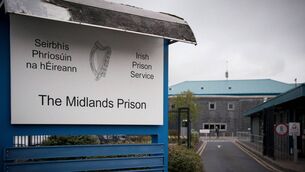Up to 30 criminals let out on temporary release every day due to overcrowding
Release rates are running at an average of 14%, meaning one in every seven prisoners meant to be serving a custodial sentence is actually out of prison at any given time.
But it has been as high as 18% recently and, with the next big prison extension project not scheduled to be open for at least another year, the number of releases is expected to remain large for the foreseeable future.













